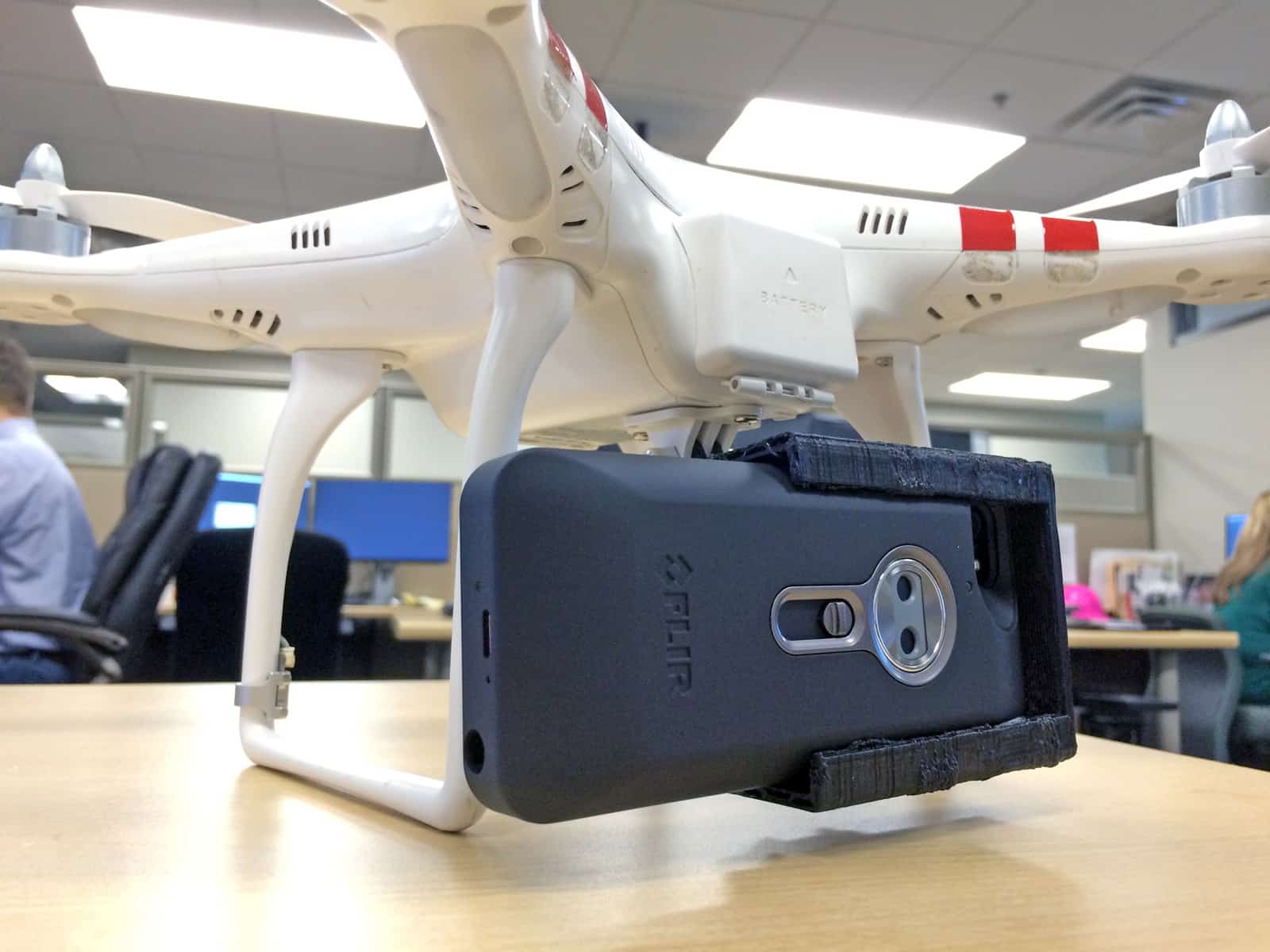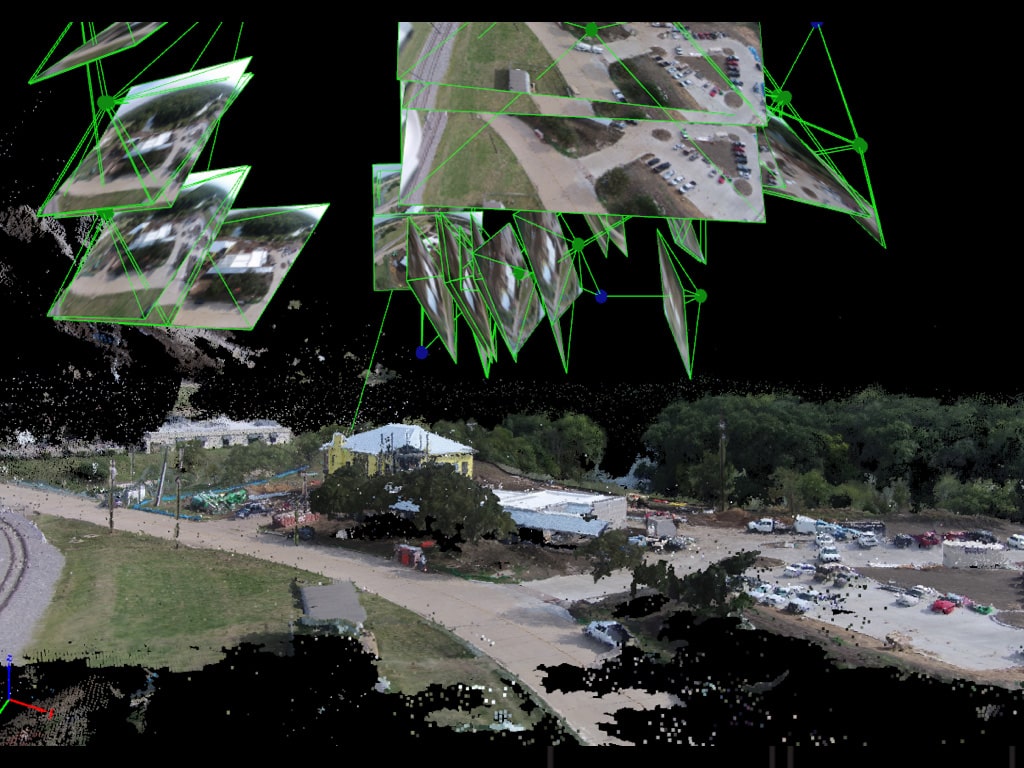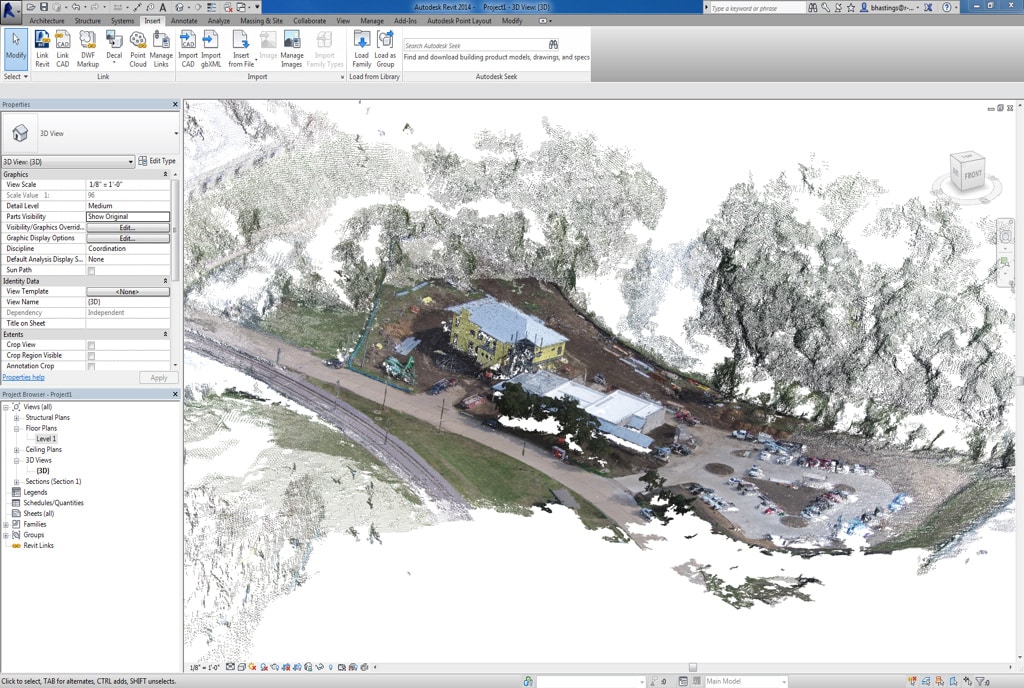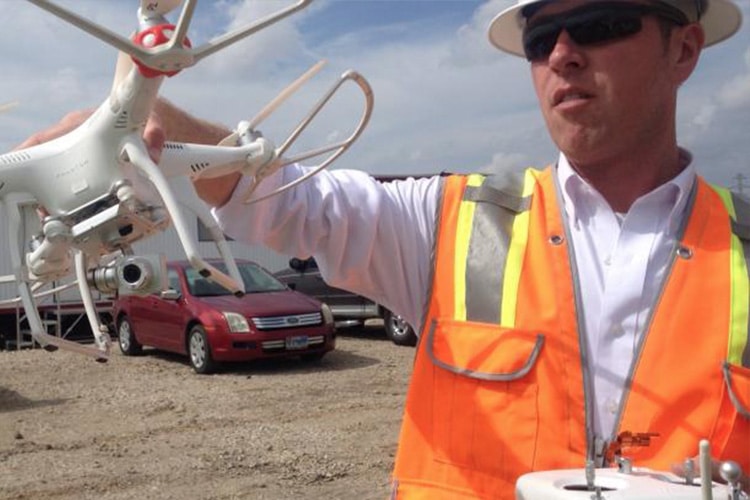On a recent trip to see what technology Todd Wynne and the rest of the team at Rogers-O’Brien Construction (RO) have been tinkering with, I had a chance to experience firsthand which new hardware innovations will one day be applied in the AEC space.
One of the “future” technologies being used today is showing some promise and already has a definable ROI. Quadcopters have taken the AEC space by storm. For around $1,500, this visualization aid has many applications for gathering and communicating jobsite information.
Rogers-O’Brien is currently testing the use of quadcopters for use in weekly site reporting. With the Federal Aviation Administration (FAA) still trying to figure out how to best regulate small “hobby” and “prosumer” users, safety is the number one priority.
Blake Potts, Wynne’s colleague, is overseeing the implementation and use of these aerial devices. He has even begun to assemble a comprehensive flight manual, which gets loaded onto iPads with form field PDFs for easy data entry. These PDFs include pre-flight checklists to document wind speed and weather prior to takeoff. A flight plan is also required, which takes into account cranes and other potential obstacles.

Progress is being made with the FAA’s acceptance of drones for commercial use on construction sites. Just this week, the FAA granted Trimble Navigation Limited, VDOS Global, Clayco, and Woolpert, along with seven film and video production companies, regulatory exemptions to fly drones in national airspace.
According to a recent article in Forbes, the exemptions were granted in accordance to Section 333 of the FAA Modernization and Reform Act. The application process is lengthy and requires that firms demonstrate that their use of the drones will not pose a threat to national airspace or national security. The article also states that to date the agency has received 167 requests for exemptions from commercial entities.
This is a big win for firms like Rogers-O’Brien, who have already begun to see major benefits returning real value for the innovation team. The $1,500 investment pays for itself within a few flights, depending on the mission.
One particular mission saved the project over $15,000 in warranty work. A 13-story building was experiencing some precast leaking. Normally, in order to inspect the area, they would have had to erect scaffolding or suspend an inspector over the building edge to access the area and take photos for the risk manager.
Based on the size of the inspection area, they would have to erect, tear down and re-erect scaffolding. This job that would have taken over four days and cost them $1,500 for every 15 feet moved was done in a one-hour quadcopter flight.


The video and images taken were shared with the risk manager, who determined the best way to solve the issue, saving them time and thousands of dollars in warranty work.
The drones are primarily being used for aerial inspection and progress photos today, but Potts sees potential for live feeds to the office, with photogrammetry or laser scanning from photographs collected during flight. Putting that theory to the test, the RO team has begun using their quadcopter for Reality Capture. Using visualization software called Pix4D, they’re able to turn photos into models that document existing conditions, as-builts, visualization, and 3D printing. Wynne says it’s like laser scanning with photos.
In another blog, I shared how the RO team was leveraging FLIR, a thermal technology device for the iPhone, to troubleshoot HVAC and plumbing issues in the field. Taking that idea a step further, the team designed, built and manufactured their own custom mount using a 3D printer. They’ve combined UAV technology (DJI Phantom Quadcopter), 3D printing, and the FLIR thermal camera to conduct roof inspections. The alpha version of this system was successfully flown in October of this year with plans to refine the system further in 2015.
Since starting this project in 2014, the company to date has utilized 6 quadcopters, taken over 14,000 photos and captured 331 movies. The team believes this technology will allow owners in the future to keep eyes on their job site from anywhere in the world.











